Lecture
This term has other meanings, see Electronics (meanings).
Various electronic components
Electrician (from the Greek. Ηλεκτρόνιο - electron) - the science of the interaction of electrons with electromagnetic fields and methods of creating electronic devices and devices for the conversion of electromagnetic energy, mainly for receiving, transmitting, processing and storing information. [one]
But electron tubes had significant drawbacks. This is primarily large size and high power consumption *** (which was critical for portable devices). Therefore, solid-state electronics began to develop, and diodes and transistors began to be used as the element base. The invention of radio preceded the emergence of electronics. Since the radio transmitters immediately found application (primarily on ships *** and in the military business), they needed an element base, which electronics took up the creation and study of. Element base of the first generation was based on electronic tubes. Accordingly, vacuum electronics has been developed. Its development was also facilitated by the invention of television and radar, which were widely used during World War II.
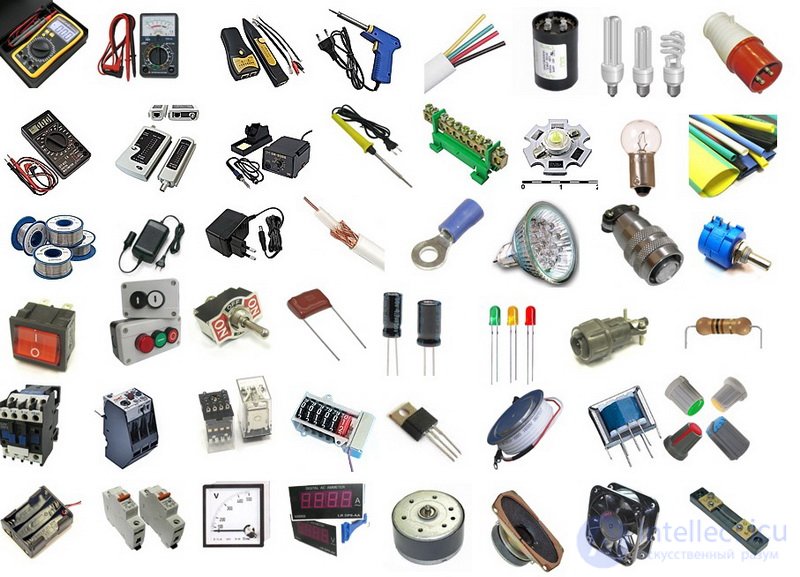
The development of the element base from
50s: historical excursionThe simplest of devices is the mechanical key. The first electronic key was a vacuum diode, patented in 1904 by the Englishman D.A. Fleming. Then there was a vacuum triode (1906, L. De Forest and R. Liben) and a semiconductor transistor (1947, W. Brattein, J. Bardin, W. Shockley), and then integrated circuits on silicon (1958-1959), laid the foundation for microelectronics. The main trend of this development is to reduce the size of the instrument structures. In modern integrated circuits, they make up units and tenths of a micron (1 micron = 10-6 m
Further development of electronics is associated with the advent of computers. Computers based on transistors were distinguished by their large size and power consumption ***, as well as low reliability (due to the large number of parts). Micro-assemblies and then microchips began to be used to solve these problems. The number of chip elements gradually increased, microprocessors began to appear. Currently, the development of electronics contributes to the emergence of communications, as well as various wireless devices, navigators, communicators, tablets, etc.
The main milestones in the development of electronics can be considered:
The following areas of electronics can be distinguished:
An electronic device may include a variety of materials and environments where electrical signal processing takes place using different physical processes. But in any device there is necessarily an electrical circuit.
Many scientific disciplines of technical universities are devoted to the study of various aspects of electronics.
The history of solid-state electronics
The term solid-state electronics appeared in the literature in the middle of the 20th century to designate devices on a semiconductor component base: transistors and semiconductor diodes, replacing the cumbersome, low-efficiency electrovacuum devices - radio tubes. The root is “hard” used here because the process of controlling electric current occurs in the solid body of a semiconductor in contrast to vacuum, as it did in an electron tube. Later, at the end of the 20th century, this term lost its meaning and gradually fell out of use, since practically all the electronics of our civilization began to use only semiconductor solid-state active elemental bases.
Miniaturization of devices
With the birth of solid-state electronics, a revolutionary fast process of miniaturization of electronic devices began. For several decades, the active elements have decreased ten billion times - from a few centimeters of an electronic radio tube to several nanometers of a transistor integrated on a semiconductor chip.
Active and passive elements in solid-state electronics are created on a homogeneous super-pure semiconductor crystal, most often silicon, by injection or spraying new layers in certain coordinates of the crystal body of atoms of other chemical elements, molecules of more complex, including organic substances. Injection changes the properties of a semiconductor at the injection (doping), changing its conductivity on the reverse, thus creating a diode or a transistor or a passive element: resistor, conductor, capacitor or inductance coil, insulator, heat sink element and other structures. In recent years, the production technology of light sources on a chip has become widespread. A huge number of discoveries and technologies developed using solid-state technologies still lie in the vaults of patent holders and are waiting in the wings. The technology for producing semiconductor crystals, the purity of which allows the creation of elements a few nanometers in size, has been called nanotechnology, and the electronics section is called microelectronics.
In the 1970s, in the process of miniaturization of solid-state electronics, there was a split into analog and digital microelectronics. In the conditions of competition in the market of element base manufacturers, the manufacturers of digital electronics won. And in the XXI century, the production and evolution of analog electronics were practically halted. Since in reality all consumers of microelectronics require from it, as a rule, not digital, but continuous analog signals or actions, digital devices are equipped with DACs at their inputs and outputs. The miniaturization of electronic circuits was accompanied by an increase in the speed of devices. So, the first digital devices of TTL technology required microseconds to switch from one state to another and consumed a large current, requiring special measures to remove heat.
At the beginning of the XXI century, the evolution of solid-state electronics in the direction of miniaturization of elements gradually stopped and is now almost stopped. This stop was predetermined by the achievement of the smallest possible size of transistors, conductors and other elements on the semiconductor chip, which are still able to divert the heat generated during the flow of current and not collapse. These dimensions have reached units of nanometers and therefore the technology of manufacturing microchips is called nanotechnology. The next step in the evolution of electronics may become optoelectronics, in which the photon, a much more mobile, less inertial than electron / “hole” in the semiconductor of solid-state electronics, will act as the carrier element.
The main solid-state active devices used in electronic devices:
Examples of the use of solid-state devices in electronics:
Since the analog and digital circuits information is encoded differently, they have different signal processing processes. It should be noted here that all operations that can be performed on an analog signal (in particular, amplification, filtering, range limiting, etc.) can be duplicated in the field of digital electronics. The behavior of any digital circuit can also be explained using rules that describe the operation of analog electronic circuits.
Noise
In accordance with the method of encoding information in analog circuits, they are much more vulnerable to the effects of noise than digital circuits. A small change in the signal can make significant modifications to the information transmitted and ultimately lead to its loss; in turn, digital signals take only one of two possible values, and in order to cause an error, the interference should be about half of their total value. This property of digital circuits can be used to increase the resistance of signals to interference. In addition, noise counteraction is provided by means of signal recovery at each logic gate, which reduces or eliminates interference; Such a mechanism becomes possible due to the quantization of digital signals [2] . As long as the signal remains within a certain range of values, it is associated with the same information.
Noise is one of the key factors affecting signal accuracy; this is mainly the noise present in the original signal and the interference introduced during its transmission (see Signal-to-Noise Ratio). Fundamental physical limitations - for example, the so-called. "Shot noise" in the components - set the limits of resolution of analog signals. In digital electronics, additional accuracy is provided by the use of auxiliary bits that characterize the signal; their number depends on the performance of the analog-to-digital converter (ADC) [3] .
Development difficulty
Analog circuits are more difficult to develop than comparable digital ones; This is one of the reasons why digital systems have become more common than analog systems. An analog circuit is developed manually, and the process of creating it provides less opportunity for automation. It should be noted, however, that in one form or another, a digital electronic device needs an analog-interface to interact with the environment [4] . For example, a digital radio has an analogue preamplifier, which is the first link in the receiving circuit.
Electronic circuits and their components can be divided into two key types depending on the general principles of their functioning: analog (continuous) and digital (discrete). The same device can consist of both circuits of the same type or of mixing both types in one or another proportion.
Mostly analog electronic devices and devices (radio receivers, for example) constructively represent a combination of several varieties of basic circuits. Analog circuits use a continuous voltage range, as opposed to discrete levels used in digital circuits. At the moment, a significant number of various analog circuits have been developed - in particular, their number is large due to the fact that a “circuit” means a lot: from a single component to a whole system consisting of thousands of elements. Analog circuits are sometimes called linear (although it should be noted that in some of their forms — converters, for example, or modulators — many non-linear effects are used). As typical examples of analog circuits can be called electron tubes and transistor amplifiers, operational amplifiers and oscillators.
At present it is difficult to find such an electronic circuit that would be completely analog. Now analog circuits use digital or even microprocessor technologies to increase their performance. Such a scheme is usually called not analog or digital, but mixed. In some cases, it is difficult to make a clear distinction between continuous and discrete schemes - due to the fact that both those and others include elements of both linear and non-linear nature. Примером может послужить, допустим, компаратор: получая на входе непрерывный диапазон напряжения, он в то же время выдает на выходе лишь один из двух возможных уровней сигнала, подобно цифровой схеме. Похожим образом перегруженный транзисторный усилитель может приобрести свойства контролируемого переключателя, также имеющего два уровня выходного сигнала.
К цифровым относятся схемы, основанные на некотором количестве дискретных уровней напряжения. Они представляют собой наиболее типичную физическую реализацию булевой алгебры и составляют элементную основу всех цифровых компьютеров. Термины «цифровая схема», «цифровая система» и «логическая схема» часто при этом рассматриваются как синонимичные. Для цифровых схем характерна, как правило, двоичная система с двумя уровнями напряжения, которые соответствуют логическому нулю и логической единице соответственно. Часто первый соотносится с низким напряжением, а вторая — с высоким, хотя встречаются и обратные варианты. Изучались также и тернарные логические схемы (то есть с тремя возможными состояниями), предпринимались попытки построения компьютеров на их основе. Помимо вычислительных машин, цифровые схемы составляют основу электронных часов и программируемых логических контроллеров (используемых для управления промышленными процессами); ещё одним примером могут служить цифровые сигнальные процессоры.
К числу базовых конструктивных элементов этого типа относятся:
Устройства с высокой степенью интеграции:
and etc.
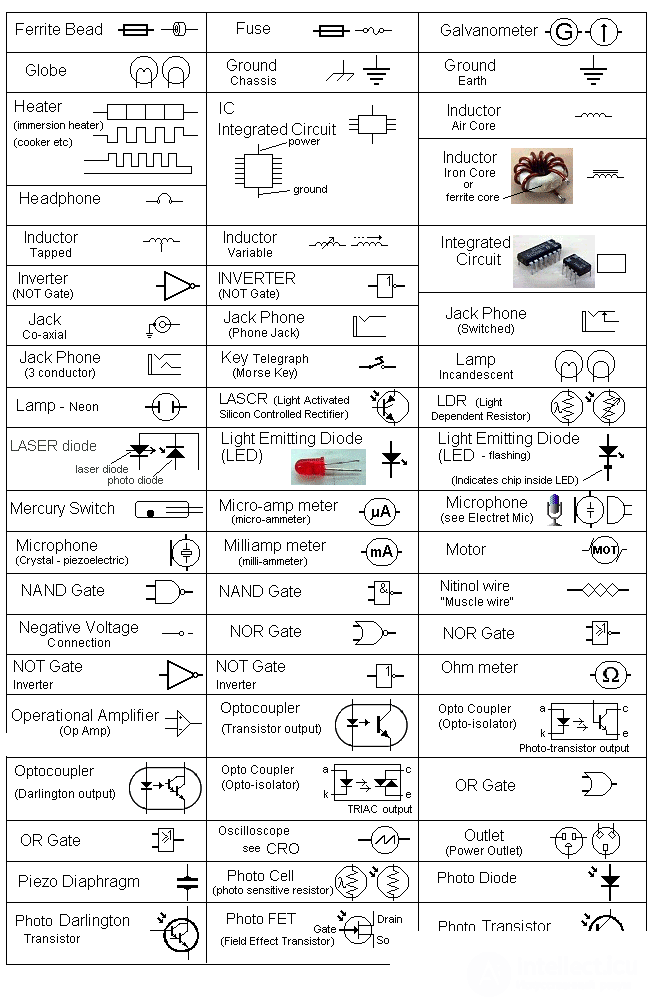
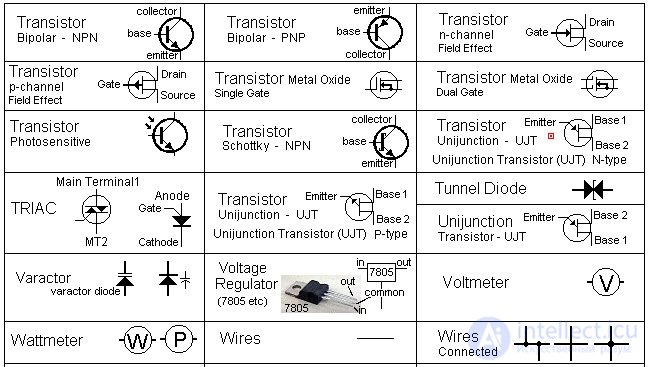
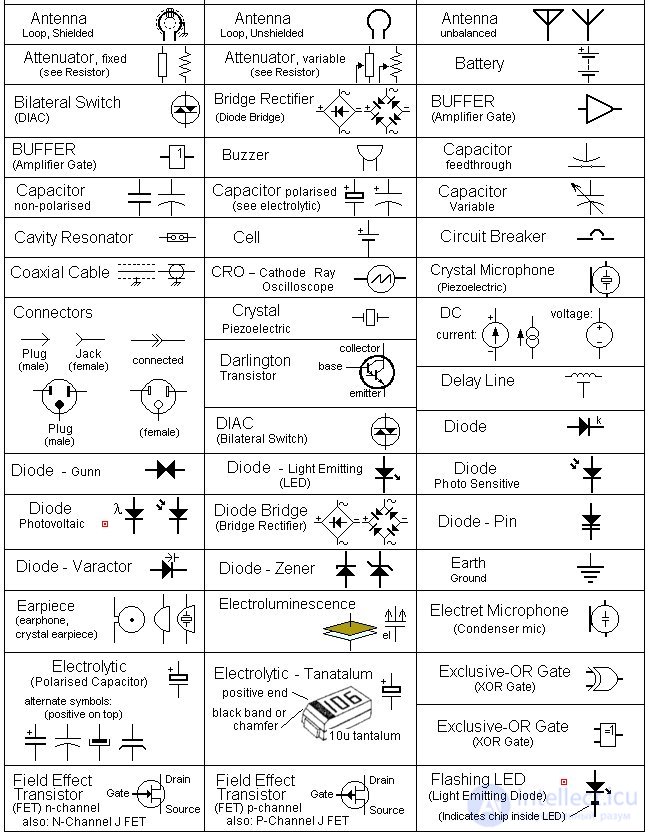
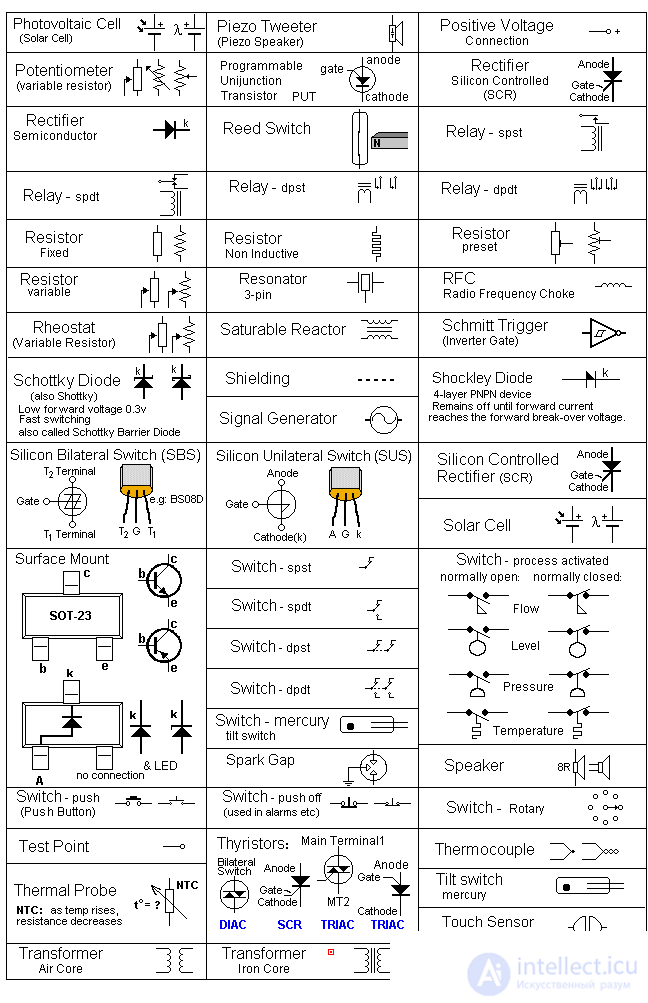
Надёжность электронных устройств складывается из надёжности самого устройства и надёжности электроснабжения. Надёжность самого электронного устройства складывается из надёжности элементов, надёжности соединений, надёжности схемы и др. Графически надёжность электронных устройств отображается кривой отказов (зависимость числа отказов от времени эксплуатации). Типовая кривая отказов имеет три участка с разным наклоном. На первом участке число отказов уменьшается, на втором участке число отказов стабилизируется и почти постоянно до третьего участка, на третьем участке число отказов постоянно растёт до полной непригодности эксплуатации устройства.
Электронные компоненты
| Пассивные твердотельные | Резистор · Переменный резистор · Подстроечный резистор · Варистор · Фоторезистор Конденсатор · Переменный конденсатор · Подстроечный конденсатор Катушка индуктивности · Кварцевый резонатор · Предохранитель · Самовосстанавливающийся предохранитель · Трансформатор · Мемристор |
|---|---|
| Активные твердотельные |
Диод · Светодиод · Фотодиод · Полупроводниковый лазер · Диод Шоттки · Стабилитрон · Стабистор · Варикап · Вариконд · Магнитодиод ·Диодный мост · Лавинно-пролётный диод · Туннельный диод · Диод Ганна Датчик Холла |
| Пассивные вакуумные | Бареттер |
| Активные вакуумные и газоразрядные | Электронная лампа · Электровакуумный диод · Триод · Маячковый триод · Тетрод · Лучевой тетрод · Пентод · Гексод · Гептод · Пентагрид · Октод · Нонод · Механотрон · Клистрон · Магнетрон · Амплитрон · Платинотрон · Электронно-лучевая трубка · Лампа бегущей волны · Лампа обратной волны · Тиратрон · Газотрон · Кенотрон · Игнитрон |
| Устройства отображения | Электронно-лучевая трубка · ЖК-дисплей · Светодиод · Газоразрядный индикатор · Вакуумно-люминесцентный индикатор · Блинкерное табло ·Семисегментный индикатор · Матричный индикатор · Кинескоп |
| Акустические устройства и датчики | Микрофон · Громкоговоритель · Тензорезистор |
| Термоэлектрические устройства | Термистор · Термопара · Элемент Пельтье |
Comments
To leave a comment
Electronics, Microelectronics, Element Base
Terms: Electronics, Microelectronics, Element Base